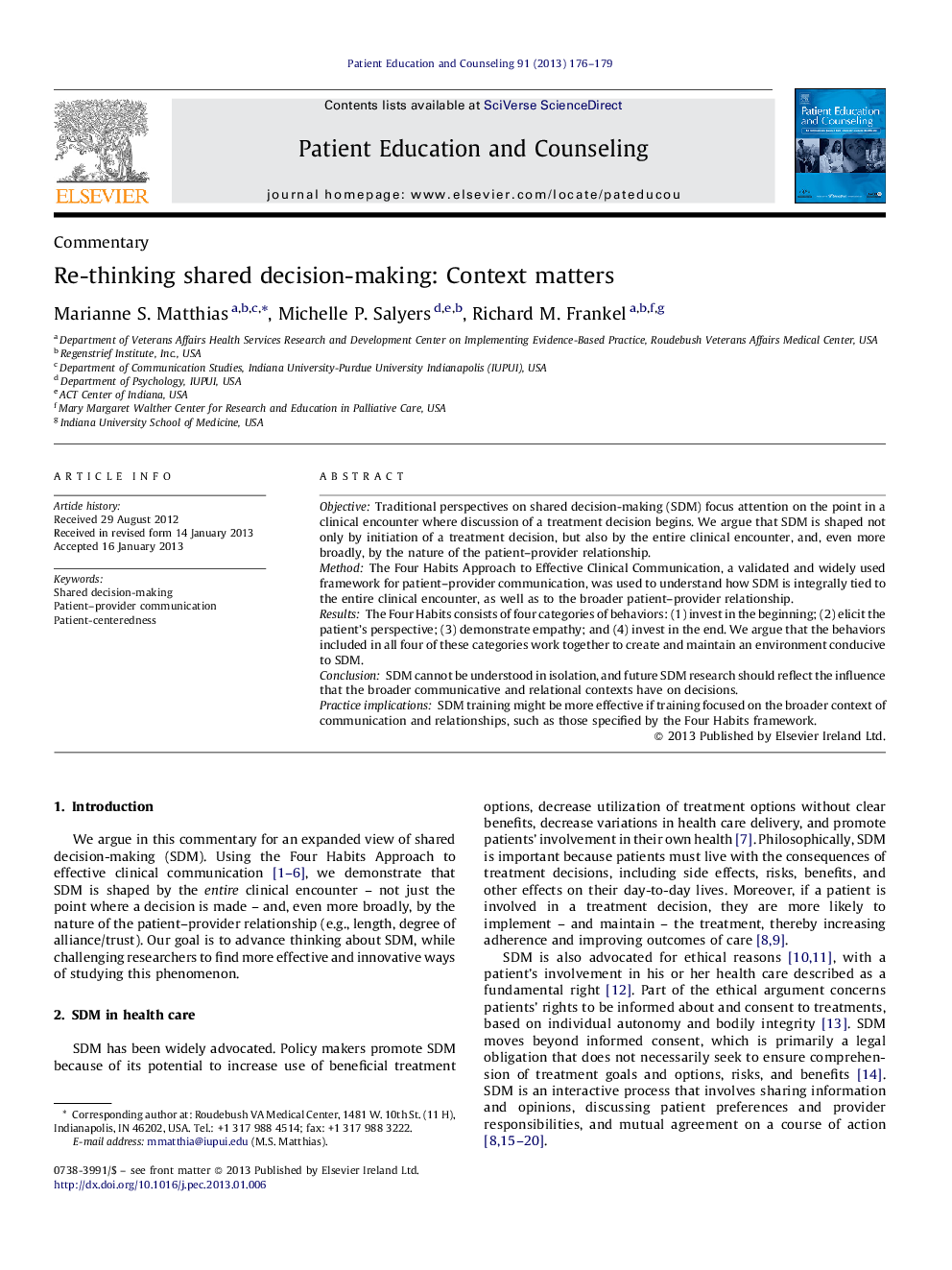| Article ID | Journal | Published Year | Pages | File Type |
|---|---|---|---|---|
| 6152399 | Patient Education and Counseling | 2013 | 4 Pages |
ObjectiveTraditional perspectives on shared decision-making (SDM) focus attention on the point in a clinical encounter where discussion of a treatment decision begins. We argue that SDM is shaped not only by initiation of a treatment decision, but also by the entire clinical encounter, and, even more broadly, by the nature of the patient-provider relationship.MethodThe Four Habits Approach to Effective Clinical Communication, a validated and widely used framework for patient-provider communication, was used to understand how SDM is integrally tied to the entire clinical encounter, as well as to the broader patient-provider relationship.ResultsThe Four Habits consists of four categories of behaviors: (1) invest in the beginning; (2) elicit the patient's perspective; (3) demonstrate empathy; and (4) invest in the end. We argue that the behaviors included in all four of these categories work together to create and maintain an environment conducive to SDM.ConclusionSDM cannot be understood in isolation, and future SDM research should reflect the influence that the broader communicative and relational contexts have on decisions.Practice implicationsSDM training might be more effective if training focused on the broader context of communication and relationships, such as those specified by the Four Habits framework.
